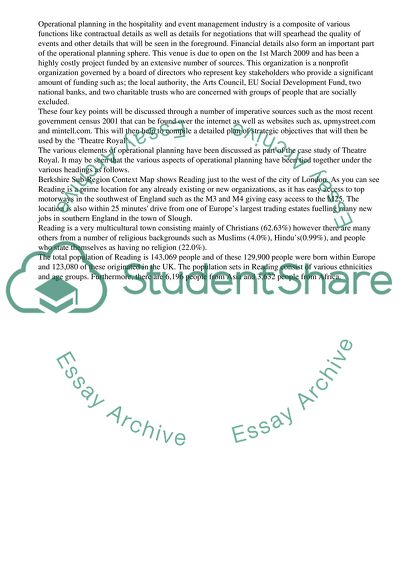Cite this document
(Arts Management: Operational Planning Report Example | Topics and Well Written Essays - 4750 words, n.d.)
Arts Management: Operational Planning Report Example | Topics and Well Written Essays - 4750 words. https://studentshare.org/management/1712032-operational-planning-arts-and-events-management
Arts Management: Operational Planning Report Example | Topics and Well Written Essays - 4750 words. https://studentshare.org/management/1712032-operational-planning-arts-and-events-management
(Arts Management: Operational Planning Report Example | Topics and Well Written Essays - 4750 Words)
Arts Management: Operational Planning Report Example | Topics and Well Written Essays - 4750 Words. https://studentshare.org/management/1712032-operational-planning-arts-and-events-management.
Arts Management: Operational Planning Report Example | Topics and Well Written Essays - 4750 Words. https://studentshare.org/management/1712032-operational-planning-arts-and-events-management.
“Arts Management: Operational Planning Report Example | Topics and Well Written Essays - 4750 Words”. https://studentshare.org/management/1712032-operational-planning-arts-and-events-management.


